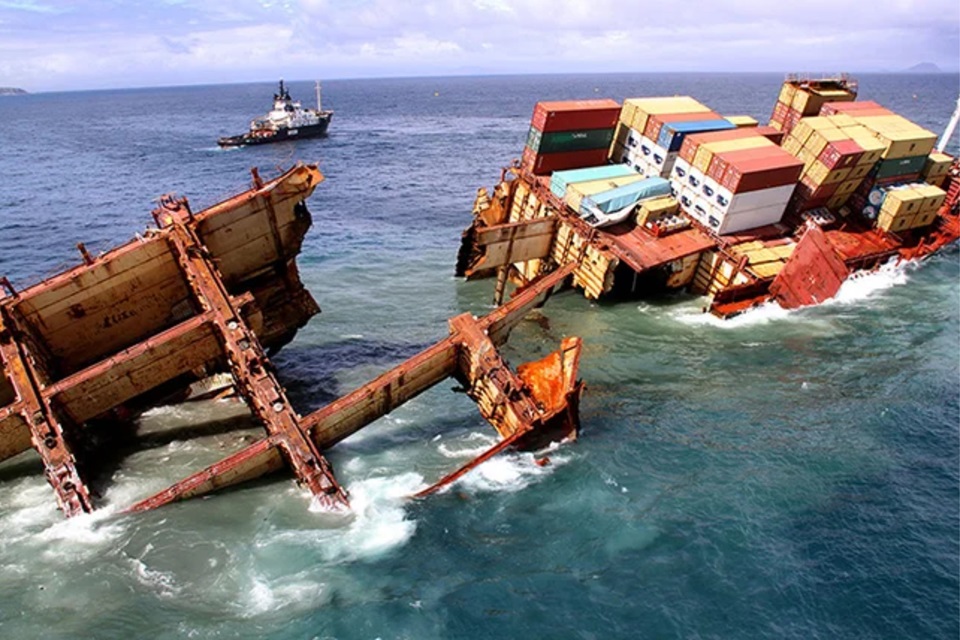Insights From The Rena Monrovia: A Guide To Safe Vehicle Shipping
The Rena Monrovia incident is a notable case in maritime transport, especially regarding the shipping of vehicles. In 2011, this Panamax container ship ran aground, leading to severe environmental repercussions and raising concerns about navigational safety. This article delves into the lessons learned from the Rena Monrovia, providing essential guidance for safely shipping cars by sea and emphasizing the importance of risk management in maritime operations.
Overview Of Rena Monrovia
Rena Monrovia, a Panamax container ship operated by Costamare Inc., has a rich maritime history, having undergone various operational changes since its inception. Originally constructed as ZIM America, this vessel has made significant contributions to global trade, capable of carrying 3,351 twenty-foot equivalent units (TEUs). However, its legacy is largely influenced by the grounding incident that brought attention to the critical aspects of shipping safety.
Key Specifications Of Rena Monrovia
| Specification | Details |
| Length | 236 meters (774 feet) |
| Breadth | 32.2 meters (106 feet) |
| Draught | 12 meters (39 feet) |
| Container Capacity | 3,351 TEU |
| Gross Tonnage | 38,788 |
| Net Tonnage | 16,454 |
| Deadweight Tonnage | 47,231 tonnes |
| Crew Size | 20 |
| Engine Type | Cegielski-Sulzer 8RTA76 |
| Engine Power | 21,996 kW (29,497 hp) |
| Fuel Consumption | 90 tons of heavy fuel oil/day |
| Service Speed | 21 knots (39 km/h; 24 mph) |
| Bow Thruster | Yes |
| Auxiliary Generators | Two 1,240 kW (1,660 hp) sets |
Impact Of Maritime Incidents On Vehicle Transport
The grounding of Rena Monrovia illustrates the significant environmental and economic impacts maritime incidents can have on vehicle shipping.
Environmental Consequences
When the Rena Monrovia ran aground, it caused extensive oil spills, harming local wildlife and ecosystems. Such environmental disasters require lengthy cleanup operations and pose long-term threats to marine life and coastal communities.
Economic Implications
Incidents like these result in substantial financial burdens for shipping companies, including fines and cleanup costs. Furthermore, they can disrupt supply chains, increasing shipping costs and leading to higher prices for consumers due to increased insurance premiums and operational expenses.
Regulatory Changes
In response to incidents such as Rena Monrovia, regulatory bodies have tightened maritime safety standards. The International Maritime Organization (IMO) has implemented new conventions focused on enhancing navigational safety, mandating safety drills, and developing comprehensive emergency response strategies.
Guidelines For Safe Vehicle Transport By Ship
Transporting cars by sea requires careful planning and adherence to safety protocols, drawing lessons from the Rena Monrovia incident:
- Choose a Reputable Shipping Company: Research and select a well-reviewed company with expertise in car transportation. Check their licensing and insurance, and understand their shipping methods, whether Roll-on/Roll-off or container shipping.
- Prepare Your Vehicle: Conduct a thorough inspection of your vehicle, document its condition with photographs, and remove personal items. Ensure that fluid levels are adequate and that the tires and battery are in good condition.
- Understand Regulations and Insurance: Familiarize yourself with relevant regulations and customs requirements for your destination. Ensure you have sufficient insurance coverage to protect against potential damage during transit.
- Final Steps Before Shipping: Drop off your vehicle at the designated terminal, complete all required documentation, and allow the shipping company to conduct a thorough inspection and secure loading.
- Arrival and Inspection: Upon arrival at your destination, pick up your vehicle and perform a detailed inspection for any damages that may have occurred during transit.
Conclusion
The Rena Monrovia incident underscores the importance of meticulous planning and adherence to safety standards in maritime transport. By learning from past mistakes, shipping companies can enhance their navigational practices and emergency preparedness. By following established guidelines, individuals can ensure a safer, more efficient vehicle shipping experience, contributing to a more responsible and sustainable shipping industry.
FAQs
What navigational errors led to the Rena Monrovia incident?
The grounding was primarily caused by miscalculations in navigation, emphasizing the need for improved training and technology in maritime operations.
How can I ensure my vehicle is ready for shipping by sea?
Conduct a comprehensive inspection, document the vehicle’s condition, and follow the shipping company’s specific requirements for preparation.
What should I consider when selecting a shipping method for my vehicle?
Evaluate the shipping company’s reputation, experience in vehicle transport, and the specific shipping method (RoRo or container) that best suits your needs.
How can I protect my vehicle during maritime transport?
Choose a reputable shipping company, ensure adequate insurance coverage, and prepare your vehicle by documenting its condition prior to shipping.
What recent regulations have been implemented to enhance maritime safety?
New regulations focus on improving navigational standards, mandating safety drills, and enhancing emergency response plans to prevent incidents like Rena Monrovia.





